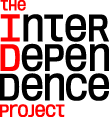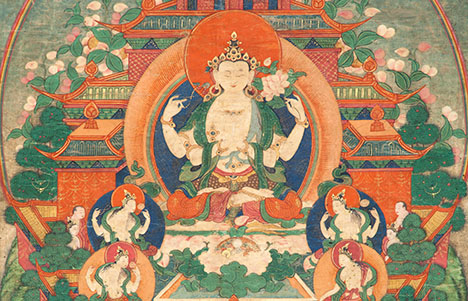
Mindfulness Meditation With Lama Aria Drolma 04/12/2021
About the Meditation
Meditation session led by Lama Aria Drolma.
The guided meditation begins at 17:48.
For centuries Himalayan practitioners have used meditation to quiet the mind, open the heart, calm the nervous system, and increase focus. Now Western scientists, business leaders, and the secular world have embraced meditation as a vital tool for brain health.
Whether you’re a beginner, a dabbler, or a skilled meditator seeking the company of others, join expert teachers in a forty-five-minute weekly program designed to fit into your lunch break. Each session will be inspired by a different work of art from the Rubin Museum’s collection and will include an opening talk, a twenty-minute meditation session, and a closing discussion.
Presented in partnership with Sharon Salzberg and the Interdependence Project. This program is supported in part by the Hemera Foundation.


RELATED ARTWORK
Theme:Awaken

Avalokiteshvara, the bodhisattva of compassion and the patron deity of Tibet, presides over his celestial dwelling of Mount Potalaka, believed to be an island off the coast of Western India. Adorned in silks and jewels, the four-armed Avalokiteshvara holds crystal rosary beads in his upper right hand and a lotus flower in his upper left, both signifying purity. His other pair of hands is folded at the heart in a gesture of salutation. Green Tara, saviour from fears, is seated in her pure realm of Sandalwood Grove in the lower left corner, and in the lower right is Padmapani, another form of Avalokiteshvara. Both are deities closely related to the central figure.
Unique details punctuate this resplendent scene. Tiny figures climb the rope and cross the bridge toward Potalaka, representing the wish of Buddhists to attain rebirth in this realm, and a self-arisen image of Avalokiteshvara carved in a rock formation appears in front of the open gate. The silk brocade border reinforces the vivid colors and the images of the painting, extending outward to invite viewers to enter the pure realm themselves.
About the Speaker

Lama Aria Drolma is a formally authorized Buddhist teacher trained in the Karma Kagyu tradition of Tibetan Buddhism. She has over a decade of monastic study and meditation training and is a graduate of the three-year, three-month traditional Tibetan Buddhist retreat, an advanced cloistered meditation training program at Palpung Thubten Choling Monastery, New York.
She is respected as a leading expert in Mindfulness Meditation and has trained extensively in the Dharma Path Program of Mindfulness and Contemplations at Palpung Thubten Choling Monastery, New York.
Lama Aria Drolma teaches worldwide, leading retreats, workshops, and corporate meditation programs, and she is a popular guest speaker at universities and organizations. She teaches Vajrayana Buddhism and Buddhist principles, making them relevant to our everyday lives, helping us cultivate loving-kindness and compassion, and bringing about a transformation of contentment and well-being.
